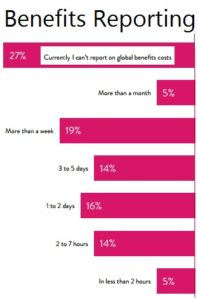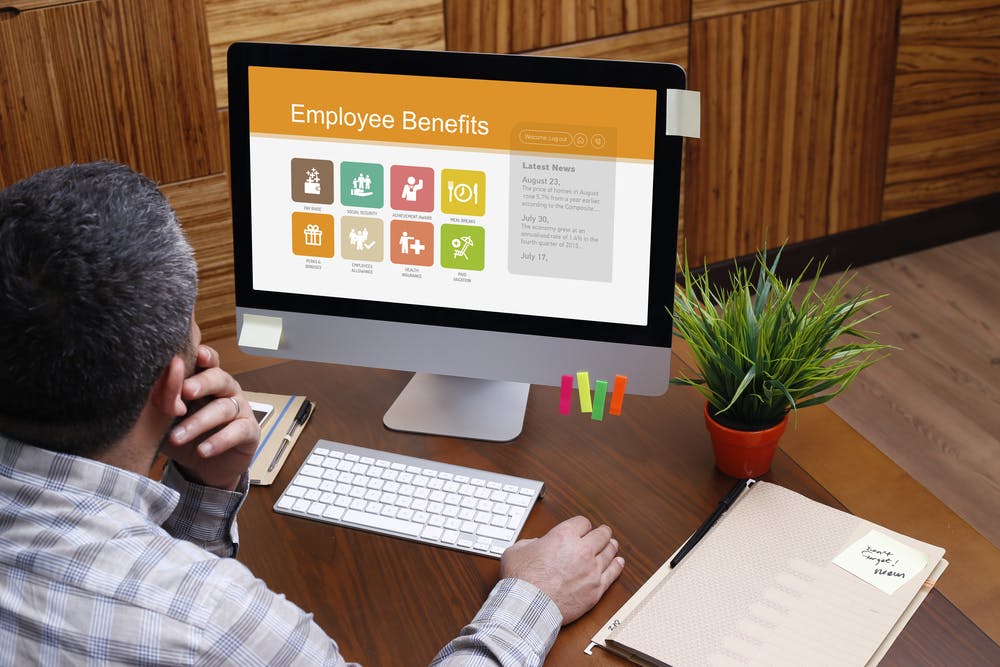We live in an era of digital transformation, and digital HR has become the new normal. Take it from HR visionary Josh Bersin: “Today we want HR technology that delivers a great employee experience and makes our work-life more productive and interesting. We want our HR tools to feel more like Facebook, Twitter, and YouTube and less like training and performance administration.”
In Bersin’s 2017 HR Technology Disruptions report he notes, “HR departments realize that their future is dependent on their ability to harness people data and build predictive analytics models.”
In this world, technology enables business leaders to access a 360-degree view of their employees – a gold mine of data at their fingertips. Global organizations are harnessing this data to understand what motivates their employees beyond just salary – focusing on talent management, recruitment and learning.
Yet, a survey conducted by my company, Thomsons Online Benefits, found that while 54% of the responding companies are using benefits analytics technology, the rest are using still using outdated technology like Excel spreadsheets to manage employee benefits.
With the annual cost of benefits reaching into the tens, even hundreds of millions of dollars for many multinational organizations, HR professionals must be able to know exactly what they are spending on global benefits, and track the return on that investment.
 But, when asked how quickly HR professionals can report on global benefit costs, 27% reported they cannot currently report the figures. Nearly a quarter (24%) said it would take them more than a week to more than a month to generate a report. Those organizations with a mature global approach to benefits governance are more likely to be able to report on global benefits costs within seven hours (19%).
But, when asked how quickly HR professionals can report on global benefit costs, 27% reported they cannot currently report the figures. Nearly a quarter (24%) said it would take them more than a week to more than a month to generate a report. Those organizations with a mature global approach to benefits governance are more likely to be able to report on global benefits costs within seven hours (19%).
Our Global Employee Benefits Watch showed nearly 90% of employers view attracting talent and improving engagement as their top benefits objective. And, a global benefits solution that leverages analytics can make a difference in employee engagement. In fact, those that use analytics to improve and report on benefits have a higher average employee engagement score (73%) than those who do not (59%).
As the report notes, this “suggests that those organizations with the data at their fingertips to make informed judgments about their global benefits policies and practices are also those that look to be well placed to be responsive and proactive in the way they engage their employees.”
Benefits is a great, and often overlooked, way to increase employee engagement. Employees want more out of benefits: work/life balance, easy access to benefits at any given time, less paper processes, ability to manage benefits from one comprehensive platform, etc. In addition, they want to feel more in control and be able to effectively communicate what they want when it comes to benefits.
Having a clear view of what employees want will drive the success of retaining and attracting top talent. Technology will not only improve employees’ workplace environment, but it will carry through to their personal lives. For example, having more parental benefits or vacation perks will allow employees to enjoy time away from work and come back more motivated and productive – leading to a more engaged workforce.
Having the right technology in place to analyze employee data will be a critical aspect in developing a meaningful, more accessible benefits offering for employees on a global scale. Benefits have become the most important offering from a company to an individual. Technology will pave the path to creating personalized talent and recruitment strategies to increase engagement, open communication between employers and employees and ultimately save costs. HR teams are continuing to realize the potential of technology to create a real business impact. If companies don’t act now, they’ll lose their best talent – is your company prepared?
